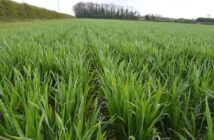As analysts in France revise down their expectations for the country’s milling wheat harvest, UK traders are eyeing export opportunities to North Africa.
The extent of the UK’s ability to capitalise on France’s poor harvest first requires a better indication of the state of our own wheat harvest. While early results suggest wheat has not suffered the yield or quality issues that affected both barley and oilseed rape, it will not be until the end of the month until an accurate picture emerges.
But basic assumptions based on the planted area and past experience suggest the UK will be well-placed to pick some of the demand vacated by France.
“This is exactly the scenario we encouraged growers to consider when making variety choices. It is only the arrival of high yielding milling wheats, such as KWS Lili, that have enabled us to capitalise on this opportunity,” says Jonathan Lane, trading director at Gleadell Agriculture.
“If as an industry we were still where we were three years ago with about 17% of the UK wheat crop consisting of Group 1 and 2 varieties then we would only be able to cover our domestic requirements. Fortunately, that is no longer the case,” he adds.
“As an exporter, the introduction of KWS Lili and other high yielding milling wheats has expanded our options and given us greater ability to target premium markets that deliver value for growers. Assuming 75% of the UK milling crop meets specification then we could have up to 1 million tonnes of suitable exportable surplus.”
His views are shared by Glencore’s Tom Eaton who says growers can expect a modest premium. “We anticipate premiums in the region of £5/t or more as the season progresses for suitable grain, but we must be mindful that these markets require a moisture content which is no more than 14-14.5% (depending on destination requirements),” he says.
“Black Sea wheat is putting pressure on prices currently, but we expect this ease as the season unfolds at which time we expect the competitive appeal of UK wheat to improve,” he adds.
France’s exportable surplus is expected to fall from 15-16 million tonnes to about 9-10 m tonnes, says Mr Lane. Of that, about 5-6 m tonnes is likely to be exported as feed wheat by road and rail to the low countries. This is normal and shouldn’t interrupt our trade, he says.
Meeting quality specification will be fundamental to any success, but the requirements of most export markets are far less demanding than those of UK millers.
“We will have to compete with Germany, Poland and the Baltic countries, but with the move to Group 1 and 2 milling wheats, which account for more than 30% of the crop area this year, there is a wonderful opportunity for the UK.
The UK crop is expected to be smaller in 2016 than the year before as a result of a fall in the sown area and lower average yield.
Gleadell’s analysis suggests 14.2-14.3 million tonnes as a whole, with a surplus of about 1.6m tonnes. Should that hold quality, then the UK could be expected to have 0.5-0.75 million tonnes available as suitable for export to North African markets.
“Exploiting this opportunity will be important to our balance of trade as Spain is likely to take less ukp wheat this year than in the past due to its good domestic crop and the availability of supplies from near-by markets,” Mr Lane adds.
Paul Taylor, seed manager at Agrii, says the introduction of high-yielding Group 2 varieties is a great fillip for growers as they complement each other by spreading the harvest workload through different maturity dates.
“The likes of KWS Lili and KWS Siskin are the varieties of the moment. They offer good export appeal and the chance of a premium with no loss in yield compared with feed wheats.
“They help balance the drilling workload as not everyone wants to go late for grass-weed control, and spread the harvest workload by being later to mature than Group 1 varieties,” he says.
“They offer good disease resistance too, especially to Septoria tritici,” he adds.



